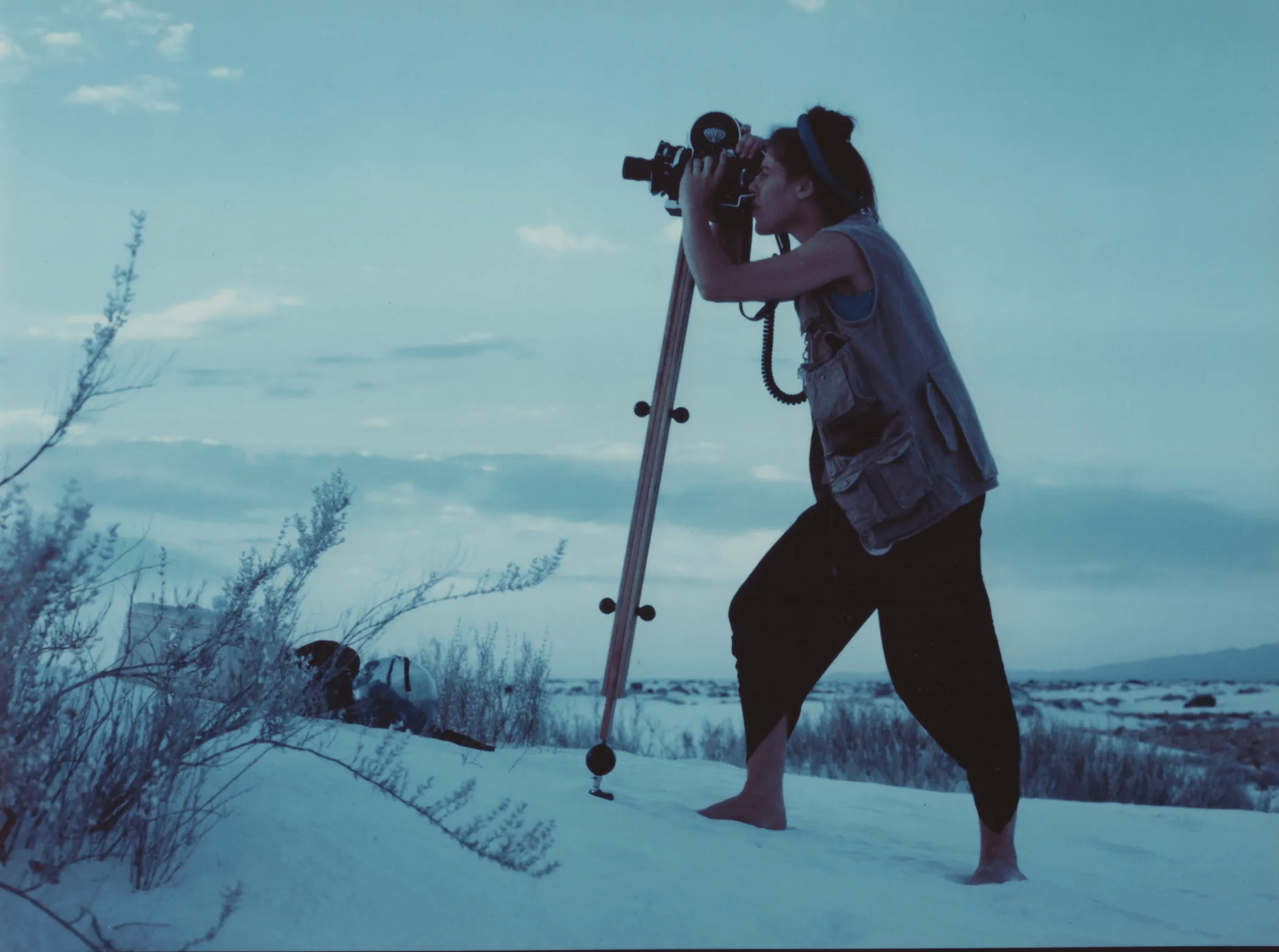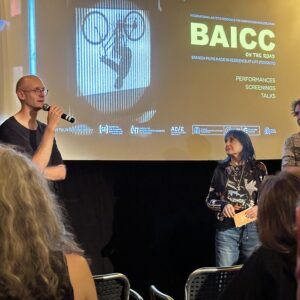
“What I find so fascinating about these photographs, these little snapshots, is not what they are, but what they are not,” says the calm yet defiant voice of Betzy Bromberg at the start of her latest film, A Darkness Swallowed. The two sepia-toned photos she is referring to could be mistaken for ordinary old images, and could go unnoticed as part of an old, forgotten family album. What seems to resonate in that initial phrase is the catastrophic rupture by Magritte on affirming “This is not a pipe” under the recognisable, simple drawing of a pipe, leading to the consequent cataclysm between languages and meaning. This provocative gesture also exists in Bromberg’s films, but above all, these photos and these words are the starting point for her small manifesto for aesthetics of negation, so to speak, which she has been advocating since the late 1970s. If the undefined territory of experimental cinema can only begin to be explained by the denial of a priori models not her own as well as her own norms, and of conventional forms of communication and audiovisual language, then Bromberg, also a professor, is perhaps the most lucid researcher into this undefined territory, though her films can hardly be perceived as guided by a theoretical line. This is because throughout her work, far from establishing an identifiable stance or style, Bromberg takes a perpetual critical posture regarding both formal and visual languages, as well as regarding what is usually categorised as political and feminist discourse. Intermittently between abstraction and figuration, her gaze settles between an atypical way of thinking and an unprecedented visual sensitivity, which result in sensory experiences that are sometimes impassive, sometimes agitated, but always ideologically and aesthetically destabilising.
An activist for the filmed image, all of Bromberg’s films were made in 16 mm with the main interest in reinventing the possibilities of recording light and motion. Hence, it is not contradictory for Bromberg to have worked for big industrial productions such as Terminator 2 (1991) and Last Action Hero (1993) as a supervisor of visual and optical effects, although today she could not be more opposite to mainstream American cinema: her commitment to a refinement of the cinematographic image is comparable to the technical and technological rigour of a certain Hollywood movement. Even this flexibility to get involved with the studio system represents another denial: the rejection of the archetype of the underground, marginal filmmaker ousted from the industrial discipline. The directions taken by Betzy Bromberg’s unpredictable work perhaps systematically deny any certainty we have about contemporary cinema.
Diego Trerotola based on the text in the Bafici catalogue 2007





